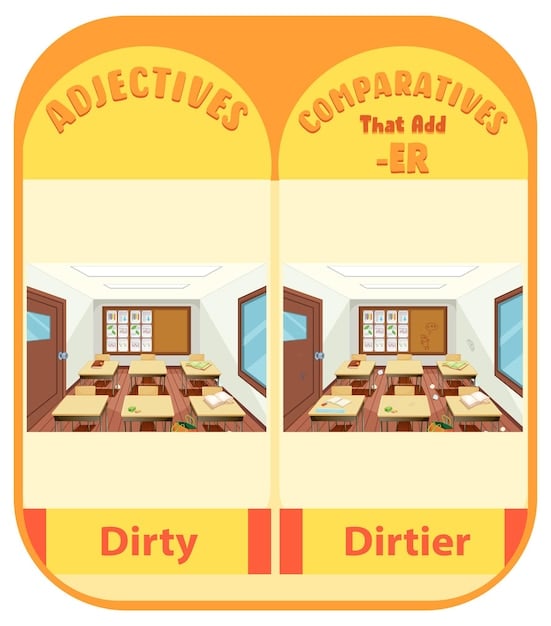Interleaving: The Ultimate Guide to Mastering Multiple Subjects

Interleaving is a study technique where you mix different subjects or topics during study sessions, proven to enhance long-term retention and understanding compared to traditional, blocked practice.
Are you struggling to keep up with multiple subjects? Discover **interleaving**, a powerful study technique that can help you master diverse topics efficiently and improve your overall learning experience.
Unlock Your Learning Potential: The Power of Interleaving
Imagine a study strategy that not only saves you time but also boosts your comprehension and retention. Interleaving is just that – a method that shatters the conventional wisdom of focusing on one subject at a time.
By strategically mixing different subjects or topics during your study sessions, you force your brain to work harder, making connections and solidifying your understanding in a way that traditional ‘blocked’ practice simply can’t achieve.
What is Blocked Practice?
To fully appreciate the benefits of interleaving, it’s essential to understand its counterpart: blocked practice. This is the method most of us are familiar with, where you dedicate a specific block of time to studying one subject before moving on to the next.
While blocked practice might feel effective in the short term, it often leads to a false sense of mastery and hinders long-term retention.
- Massed Practice: Blocked practice encourages massed practice, where you cram information in a single session, leading to rapid forgetting.
- Reduced Cognitive Effort: Studying one topic continuously requires less cognitive effort, making it easier to become complacent and less engaged.
- Illusion of Competence: Blocked practice can create an illusion that you’ve mastered a subject, as you’re only tested on recently acquired knowledge.

How Interleaving Works
Interleaving flips the script on traditional study methods, encouraging you to jump between different subjects or topics within a single study session.
This seemingly chaotic approach actually strengthens your cognitive abilities, promoting deeper learning and improved recall.
- Forced Retrieval: Interleaving forces your brain to actively retrieve information from different subjects, strengthening neural pathways and improving long-term retention.
- Enhanced Discrimination: By constantly switching between topics, you learn to discriminate between similar concepts, improving your ability to apply knowledge in different contexts.
- Increased Engagement: Interleaving keeps you mentally engaged, preventing boredom and promoting active learning.
In essence, interleaving is a powerful tool for maximizing your learning potential. It encourages active recall, enhances discrimination, and promotes engagement, leading to deeper understanding and improved long-term retention.
The Cognitive Science Behind Interleaving
Interleaving isn’t just a trendy study technique; it’s rooted in solid cognitive science principles. Several key cognitive processes explain why interleaving is so effective.
Understanding the science behind interleaving can help you appreciate its benefits and implement it effectively.
Retrieval Practice
Retrieval practice is the act of actively retrieving information from memory. Each time you retrieve information, you strengthen the neural pathways associated with that information, making it easier to recall in the future.
Interleaving naturally incorporates retrieval practice by forcing you to constantly switch between different subjects and recall previously learned information.
- Strengthens Memory: Repeated retrieval strengthens memory traces, making information more accessible over time.
- Improves Long-Term Retention: Retrieval practice is a key factor in long-term retention, as it helps transfer information from short-term to long-term memory.
- Encourages Active Learning: Retrieval practice forces you to actively engage with the material, rather than passively rereading notes.
Discrimination and Pattern Recognition
Interleaving enhances your ability to discriminate between similar concepts and recognize patterns across different subjects.
By constantly switching between topics, you’re forced to identify the unique characteristics of each concept and understand how they relate to each other.
This process sharpens your analytical skills and improves your ability to apply knowledge in different contexts.
- Distinguishing Similar Concepts: Interleaving helps you differentiate between similar concepts that might be easily confused during blocked practice.
- Identifying Underlying Patterns: By studying different subjects together, you can identify underlying patterns and connections that might not be apparent otherwise.
- Improving Problem-Solving Skills: Enhanced discrimination and pattern recognition skills can improve your problem-solving abilities in various domains.
The cognitive science behind interleaving highlights its potential to transform your learning experience. By incorporating retrieval practice and enhancing discrimination, interleaving can lead to deeper understanding, improved retention, and enhanced problem-solving skills.
Implementing Interleaving: Practical Strategies
Now that you understand the theory behind interleaving, it’s time to put it into practice. Implementing interleaving effectively requires careful planning and a willingness to experiment.
Here are some practical strategies to help you incorporate interleaving into your study routine.
Mix Up Your Study Schedule
The core principle of interleaving is to mix different subjects or topics during your study sessions. Start by creating a study schedule that incorporates this principle.
Instead of dedicating entire days to single subjects, allocate shorter blocks of time to multiple subjects, switching between them regularly.
For example, if you’re studying math, history, and literature, you might dedicate 45 minutes to each subject, cycling through them in a single study session.
Use Flashcards Strategically
Flashcards are a valuable tool for interleaving, especially when you’re dealing with vocabulary, formulas, or key concepts. Mix up your flashcards from different subjects to create an interleaving effect.
Instead of reviewing all the math flashcards together and then moving on to history, shuffle them all together and review them randomly.
This will force your brain to actively retrieve information from different subjects, strengthening memory and improving retention.

Vary Your Practice Problems
If you’re working on practice problems, avoid doing them in a sequential order. Mix up the types of problems you’re solving to create an interleaving effect.
For example, if you’re studying different types of math problems, don’t do all the algebra problems together and then move on to geometry.
Instead, shuffle the problems and work on them in a random order. This will force you to identify the underlying principles and apply them in different contexts.
By incorporating these practical strategies into your study routine, you can harness the power of interleaving to improve your learning outcomes. Remember, consistency is key, so make interleaving a regular part of your study habits.
Overcoming Challenges with Interleaving
While interleaving offers numerous benefits, it’s not without its challenges. Some students may find it difficult to adapt to this new study technique, especially if they’re used to blocked practice.
However, with persistence and the right strategies, you can overcome these challenges and reap the rewards of interleaving.
Dealing with Initial Frustration
One of the main challenges of interleaving is the initial feeling of frustration. When you first start interleaving, you may find it harder to understand and remember information compared to blocked practice.
This is because interleaving forces your brain to work harder, which can be uncomfortable at first. However, this initial discomfort is a sign that your brain is actively learning and adapting.
To overcome this frustration, start with small changes to your study routine and gradually increase the amount of interleaving over time. Be patient with yourself and remember that the benefits of interleaving will become apparent as you continue to practice.
Managing Cognitive Overload
Interleaving can sometimes lead to cognitive overload, especially if you’re studying too many subjects at once or if the subjects are too complex. To prevent cognitive overload, limit the number of subjects you’re interleaving to a manageable amount.
Start with just two or three subjects and gradually add more as you become more comfortable with the technique. You can also break down complex subjects into smaller, more manageable topics.
Don’t be afraid to take breaks and give your brain time to process the information. Short breaks can help prevent mental fatigue and improve focus.
Adapting to Different Learning Styles
Every student has a unique learning style, and interleaving may not be suitable for everyone. Some students may prefer blocked practice, while others may thrive with interleaving.
Experiment with different study techniques to find what works best for you. If you find that interleaving doesn’t suit your learning style, don’t force it.
You can still incorporate some elements of interleaving into your study routine, such as mixing up flashcards or varying practice problems. The key is to find a balance that allows you to learn effectively.
By understanding the challenges associated with interleaving and implementing effective strategies to overcome them, you can maximize its benefits and achieve your academic goals.
Interleaving vs. Other Study Techniques
Interleaving isn’t the only study technique available, and it’s essential to understand how it compares to other methods to determine if it’s right for you. Let’s take a look at some common study techniques and how they stack up against interleaving.
This comparison will help you make informed decisions about which study techniques to incorporate into your routine.
Spaced Repetition
Spaced repetition is a technique where you review information at increasing intervals over time. The goal is to reinforce memory and prevent forgetting by revisiting material just before you’re about to forget it.
While both interleaving and spaced repetition are effective study techniques, they work in different ways. Interleaving focuses on mixing different subjects, while spaced repetition focuses on revisiting information at specific intervals.
However, these two techniques can be combined to create an even more powerful learning strategy. By interleaving different subjects while also using spaced repetition, you can maximize your retention and understanding.
Elaboration
Elaboration involves connecting new information to existing knowledge. By making meaningful connections, you can improve your understanding and retention.
When you interleave, you’re often forced to make connections between different subjects or topics, which naturally leads to elaboration. However, you can also consciously engage in elaboration by asking yourself questions about the material and trying to relate it to your own experiences.
Active Recall
Active recall is the process of actively retrieving information from memory without looking at your notes. This is a highly effective way to strengthen memory and improve retention.
By interleaving, you are consistently testing your knowledge and actively recalling information from different subjects. However, you can further enhance the effectiveness of interleaving by consciously engaging in active recall exercises, such as quizzing yourself or summarizing the material from memory.
Interleaving is just one of many effective study techniques, and it’s important to experiment with different methods to find what works best for you. By combining interleaving with other techniques like spaced repetition, elaboration, and active recall, you can create a powerful learning strategy that will help you achieve your academic goals.
Real-World Examples of Interleaving in Action
To truly grasp the power of interleaving, it helps to see it in action. Let’s explore some real-world examples of how interleaving can be applied in different learning situations.
These examples will show you how interleaving can be used to master diverse subjects and improve your overall learning experience.
Medical School
Medical students are often faced with the challenge of learning a vast amount of information across multiple disciplines, such as anatomy, physiology, pharmacology, and pathology.
Interleaving can be a valuable tool for medical students. Instead of spending weeks studying each subject in isolation, they can interleave them by dedicating shorter blocks of time to each discipline.
For example, a medical student might spend 45 minutes studying anatomy, followed by 45 minutes of physiology, and then 45 minutes of pharmacology. By constantly switching between subjects, they can strengthen their understanding and retention of the material.
Learning a New Language
Learning a new language involves mastering grammar, vocabulary, pronunciation, and cultural nuances. Interleaving can be used to improve the language acquisition process.
Instead of focusing on one aspect of the language at a time, learners can interleave different skills. For example, they might spend 30 minutes working on grammar exercises, followed by 30 minutes of vocabulary practice, and then 30 minutes of conversation practice.
This approach forces the brain to actively switch between different aspects of the language, leading to a more well-rounded understanding.
Mastering Musical Instruments
Learning to play a musical instrument involves developing both technical skills and musicality. Interleaving can be used to enhance this process.
Instead of practicing scales and chords for hours on end, musicians can interleave different types of practice. For example, they might spend 30 minutes working on scales, followed by 30 minutes of sight-reading new pieces, and then 30 minutes of improvising.
By mixing up the type of practice, musicians can improve their overall skill and creativity.
These real-world examples demonstrate the versatility of interleaving and its potential to improve learning outcomes in various domains. Whether you’re studying medicine, learning a new language, or mastering a musical instrument, interleaving can help you achieve your goals faster and more effectively.
| Key Point | Brief Description |
|---|---|
| 🔄 What is Interleaving? | Mixing different topics during study sessions to boost long-term retention. |
| 🧠 Cognitive Benefits | Enhances retrieval practice, discrimination, and pattern recognition. |
| 🗓️ Practical Strategies | Mix study schedule, use flashcards, and vary practice problems. |
| 🎯 Real-World Uses | Effective in medicine, language learning, and mastering instruments. |
Frequently Asked Questions about Interleaving
▼
Interleaving involves mixing different subjects or topics during study sessions, unlike traditional methods that focus on one subject at a time. This approach enhances long-term retention and comprehension by forcing the brain to work harder.
▼
Interleaving is generally effective for a wide range of subjects, especially those that require problem-solving or critical thinking. It’s particularly beneficial when dealing with similar concepts that need to be differentiated.
▼
Start by gradually incorporating interleaving into your routine. Begin with two or three subjects and allocate shorter blocks to each. Mix them up during your study sessions and adjust as you become more comfortable.
▼
The main benefits include enhanced memory retention, improved problem-solving skills, better discrimination between similar concepts, and increased engagement. It promotes a deeper, more flexible understanding of the material.
▼
Some drawbacks include initial frustration and cognitive overload. To avoid these, start slowly, manage the number of subjects, take breaks, and adapt the technique to your learning style.
Conclusion
Interleaving is a powerful study technique that can transform your learning experience. By mixing different subjects, engaging in active recall, and promoting deeper understanding, this can lead to academic success and mastery across diverse fields. Embrace this innovative approach and unlock your full learning potential.





